Check out my custom vibration dampener
Wilson Clash 108 v2
Review & Playtest
We hope you love this article. Just so you know, TennisCompanion may collect a small share of sales from the links on this page to help keep this site running. Learn more. Disclosure: Wilson gave me this frame to evaluate, but they did not pay me to write this review or influence its contents.
The Clash 108 v2 is the most forgiving frame in Wilson’s newest series of tennis racquets, which strives to provide players with a healthy balance between flexible comfort and responsive power.
Recognizing the previous model’s success, Wilson delivers a slight refinement on the racquet, which retains the key ingredients that made it popular while aiming to enhance its weaknesses.
If you’re researching the racquet as a first-time buyer, this review will share my take on its distinct new design, ideal string setup, and how it performs on the court. I’ll also share my advice on what’s changed from the original version, so you can decide if it’s worth spending your hard-earned money to upgrade.
| Popular Clash Models |
| Wilson Clash 98 v2 |
| Wilson Clash 100L v2 |
| Wilson Clash 100 v2 |
| Wilson Clash 100 Pro v2 |
| Wilson Clash 108 v2 |
In this review, I won’t dive heavily into the frame’s specs, technical features, or alternative racquets to consider. However, my Wilson Clash 108 product page covers all those details if you’re curious.
Also, keep in mind that this frame is one of a handful of Clash tennis racquets you might consider. Check out my reviews of the Wilson Clash 98 v2, Clash 100 v2, and Clash 100 Pro v2 if you’d like to learn more about some of the other popular options.
Article Contents
Click below to jump to a section
Tap below to jump to a section
Design
Strings & Tension
Performance & Ratings
Groundstrokes
Volleys
Serves
Returns
Summary
Upgrade Advice
New to TennisCompanion?
Create a free account and explore my latest videos below
Design
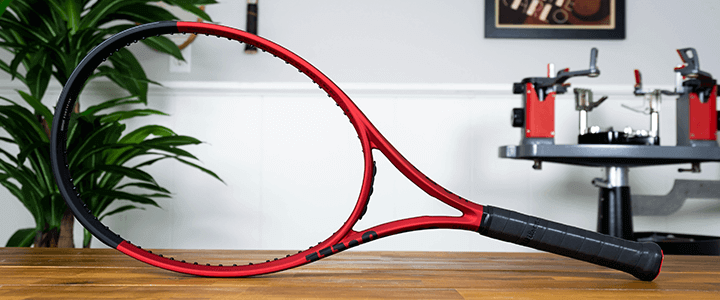
For 2022, one of the most noteworthy changes to the Wilson Clash 108 v2 is its cosmetic or paint job.
Although the design doesn’t influence the racquet’s performance, it’s frequently a deciding factor as players evaluate racquets with similar specs, so I enjoy detailing the changes and showcasing photos of the racquet to help in your decision-making.
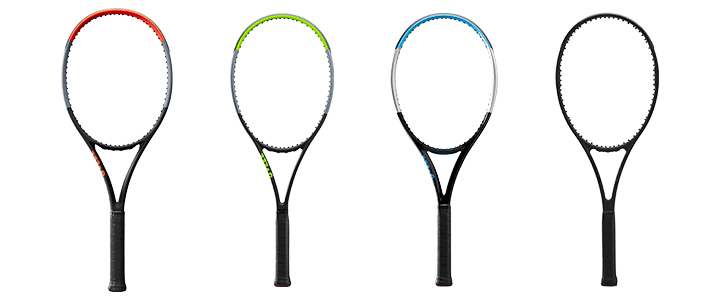
In the above photo, you can see how the first generation of the racquet adhered to Wilson’s standard “uncontaminated design,” which they used across a wide range of their tennis racquets.
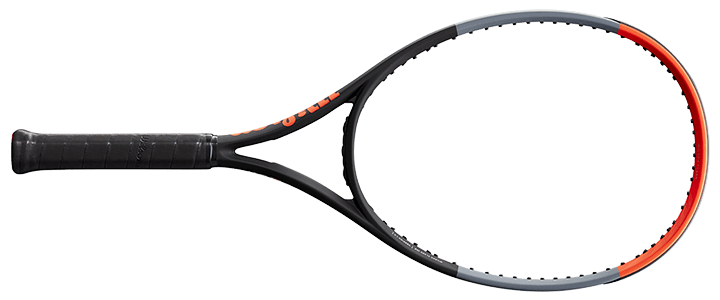
Despite red not being one of my favorite colors, I didn’t mind the original design, and I thought it looked clean.
However, for the Clash 108 v2, Wilson completely revamped the frame’s design, with a deep red matte finish and black highlights, which is a fresh look that I expect many will find appealing.

I especially like how the color isn’t completely flat. Instead, the red portions of the racquet have a soft shine, which helps it stand out more and appear brighter in the light.

Unique to Wilson, the racquet has a velvety smooth finish that’s soft to the touch with a rubber-like texture. Although it looks and feels great, the paint isn’t known for its durability, but I haven’t had any issues with it so far.

At the top of the racquet’s head, a.k.a, the tip of the hoop, the racquet features a black highlight, and on one side, a reference to the frame’s FortyFive construction displays in silver.
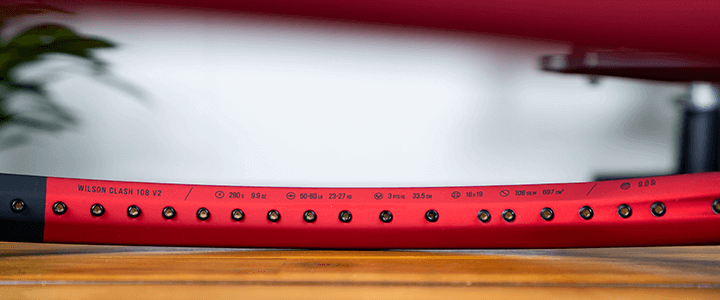
For the second generation, Wilson prints the racquet’s specs on the inside edge of the frame, including its weight, recommended string tension, balance, string pattern, head size, and stiffness index rating. The last model didn’t showcase these, but I think they’re handy, so I’m happy to see they included them.

On the racquet’s throat, you’ll find the Wilson logo wrapping one side along with the model’s details while the other side features the Clash logo.
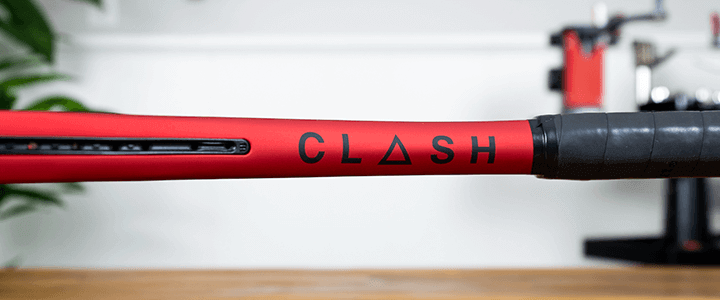
The other Clash models have the logo debossed or stamped into the frame, which is a unique look, so it’s worth noting that the 108 does not feature this styling.

At the bottom of the racquet, Wilson uses a red butt cap with its logo in black, but it doesn’t display the grip size, which I prefer because players frequently ask how to find it. Instead, you’ll have to pop open the butt cap’s trap door to see it printed on the inside.
Strings & Tension

A racquet’s strings greatly influence its performance, so it pays to be thoughtful in your selection and find one that complements the racquet and your personal preferences.
For the Clash 108 v2, Wilson recommends stringing the racquet with Luxilon Smart and suggests a tension range between 50 – 60 lbs (22.68- 27.22 kg).

Luxilon Smart is a unique polyester tennis string that adapts to a player’s swing, offering a stiffer response for control when swinging fast and a softer, more forgiving feel for slower strokes.
Although it wouldn’t be my first recommendation for this racquet, I thought it was an intriguing pair when combined with the Wilson Clash 108 v2’s lower stiffness rating.
I strung the racquet with 17 gauge or 1.25 mm Luxilon Smart at 55 lbs (24.95 kg) for my playtest, which is the halfway point between the racquet’s recommended tension. As a result, it leaves plenty of room for me to adjust up or down based on my experience.
Having used Luxilon Smart in the past, I wouldn’t recommend it for players coming to the Wilson Clash in search of comfort. Although the string has an element of responsiveness, it’s still a polyester at heart and isn’t terribly forgiving.
Instead, I’d recommend a multifilament, which will provide players with extra comfort. Alternatively, a hybrid string setup combining a poly with a multifilament or natural gut will help balance things out and won’t be too harsh considering the Clash 108’s comfort.
Performance & Ratings

Every player is different, so I’ve included some notes about my style, preferences, and current racquet setup in the table below, which I hope adds a bit of extra color to my review.
You can also learn more about me here.
| Main Strings | Luxilon ALU Power (1.25 mm) |
| Cross Strings | Luxilon ALU POwer (1.25 mm) |
| Mains Tension | 55 lbs / 24.95 kg |
| Crosses Tension | 55 lbs / 24.95 kg |
| Forehand Grip | Semi-Western |
| Backhand | Two-handed |
| Grip Size | #3 – 4 3/8 |
| Grip | Wilson Pro Performance |
| Overgrip | Wilson Pro |
| Weight | 165 lbs / 74.84 kg |
| Height | 6’0″ / 1.83m |
To help keep this review as objective as possible, I reviewed the Wilson Clash 108 v2 across a consistent set of twelve performance criteria, which I use for all my racquet reviews.
I describe why I gave the racquet these ratings in the following sections, where I discuss my experience hitting groundstrokes, volleys, serves, and returns.
Groundstrokes

The Wilson Clash 108 v2’s larger 108 in² (697 cm²) head size, extended 27.5-inch (70 cm) length, and open 16×19 string pattern combine to deliver easy access to power and spin.
Swinging fast, I had to emphasize topspin to keep the ball in the court, especially with its higher launch angle. However, if I toned things down with a slower swing, the racquet helped deliver extra depth, a bonus for beginner and intermediate players.

The racquet swings easily with its lower 9.9 ounce (280 g) weight, and the extended length helped me ramp up my racquet head speed to come up with impressive spin.
As an experienced player, I found the racquet’s biggest downfall in hitting groundstrokes to be control. Although topspin goes a long way to help manage the racquet’s power, it’s not the most precise.
With that said, you have to consider your skill level to determine if that will be an issue. The lack of control for many beginner and intermediate players will translate to added power and depth.
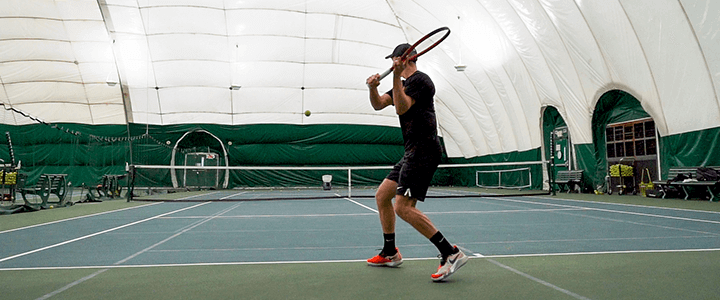
The Wilson Clash 108 v2 will help you find extra depth on slice, but it can be challenging to take a bigger cut at the ball as it often sails long with a lower margin for error.
Regarding comfort, the racquet has a forgiving feel that’s easy on the arm, even strung with a stiffer polyester like Luxilon Smart.
Volleys

Up at the net, the Wilson Clash 108 v2 provided me with a huge sweetspot and extra margin for error.
The racquet’s power is also on full display, which helps put a well-targeted ball away. Despite the racquet’s extended length, it remains relatively nimble and easy to maneuver.
Once again, the racquet’s higher launch angle comes into play, so I had to adjust my targeting further inside the court to bring the ball down, but the extra depth will be a bonus for some players.
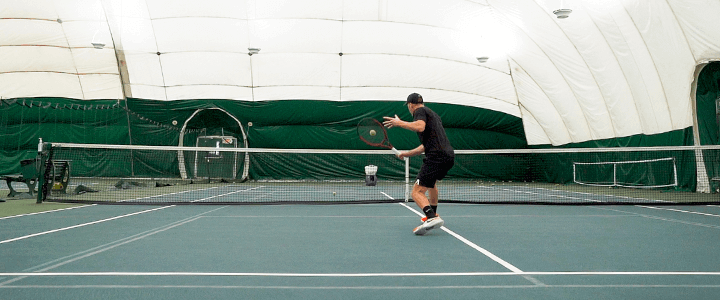
Not surprisingly, the racquet isn’t the most stable. There’s not much weight in the racquet, and it’s equal balanced when strung, so it gets pushed around hitting against a heavier ball.
Of course, this only really becomes an issue if you’re playing against an opponent who can turn up the power, so it’s another factor that requires you to consider your level.
It’s not super reliable when it comes to touch volleys, but that’s also not where Wilson intends it to shine.
Serves

On serves, the Wilson Clash 108 v2 provided me with plenty of power, which may not come as a surprise.
However, most notably, the frame delivers excellent spin that enabled me to impart next-level action on the ball, which was addicting combined with the frame’s raw power. As a bonus, I also found a bit of extra depth on my serves.

As far as precision, the racquet performs reasonably well despite its higher power and lower stability. It’s far from a top performer in this category, but the added spin goes a long way in placing the ball effectively.
If you’re looking to strengthen your serve, this frame will certainly help you get the job done.
Returns

On returns, it’s easy to get the Wilson Clash 108 v2 into position quickly, and the larger head size provides an easy target, but if you’re swinging out, it requires plenty of extra focus and spin.
The pace of a well-hit serve, combined with the racquet’s power and higher launch angle, tended to result in a lack of control, with the ball quickly sailing long.
Furthermore, the frame struggled to keep up with a heavier serve, lacking stability, which further amplified the challenge to control the ball confidently.
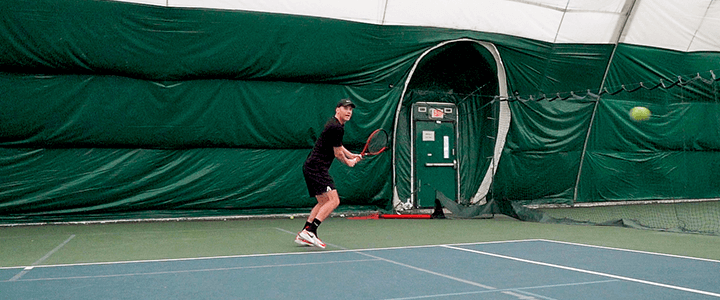
However, with all that said, I find it necessary to reiterate that the Wilson Clash 108 v2 design is best suited for a player who will benefit from the extra power and depth it provides on returns.
Across a broad spectrum of the best racquets on the market, it’s not going to score high on returns. However, it will provide its intended market with precisely what they need.
Summary

The Wilson Clash 108 v2 strengths cater to beginner and intermediate players who desire a racquet that can help improve their game by compensating for their weaknesses.
Its lightweight power, added spin potential, and larger head size makes it an accessible racquet that will support a player’s growth while delivering arm-friendly comfort for longevity.
I’d encourage intermediates who are finding their rhythm and steadily improving to seek out a standard 27-inch racquet with a smaller mid-range head size, like the Wilson Clash 100 v2, which will serve as a better platform for continued growth.

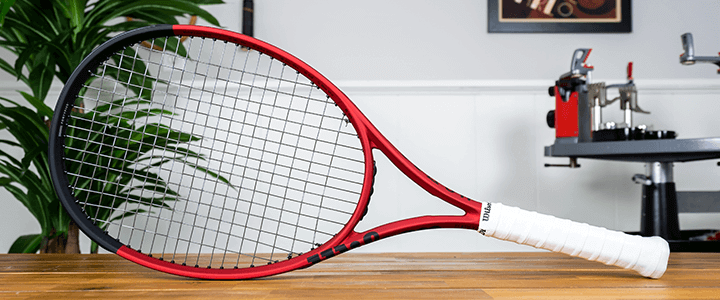



Leave a Reply
Want to join the discussion?Feel free to contribute!